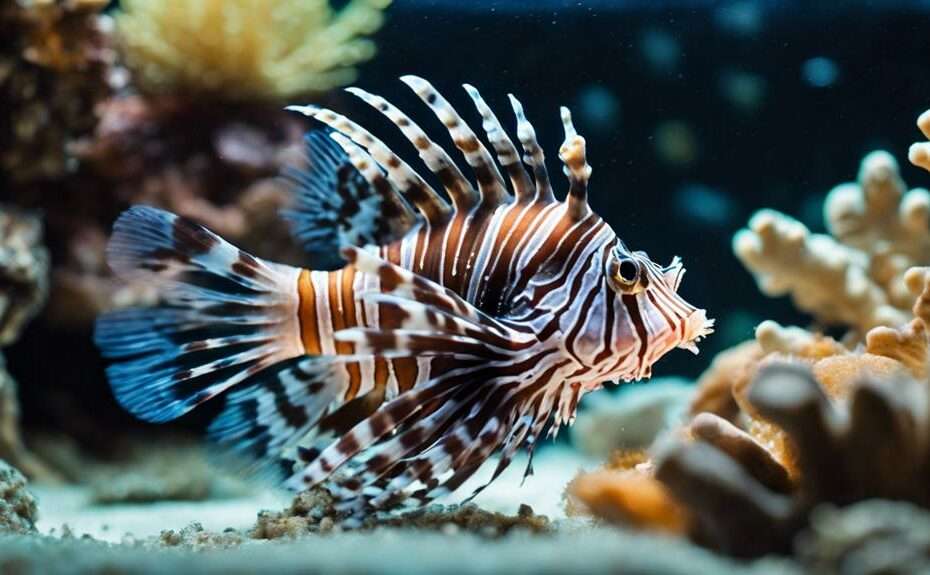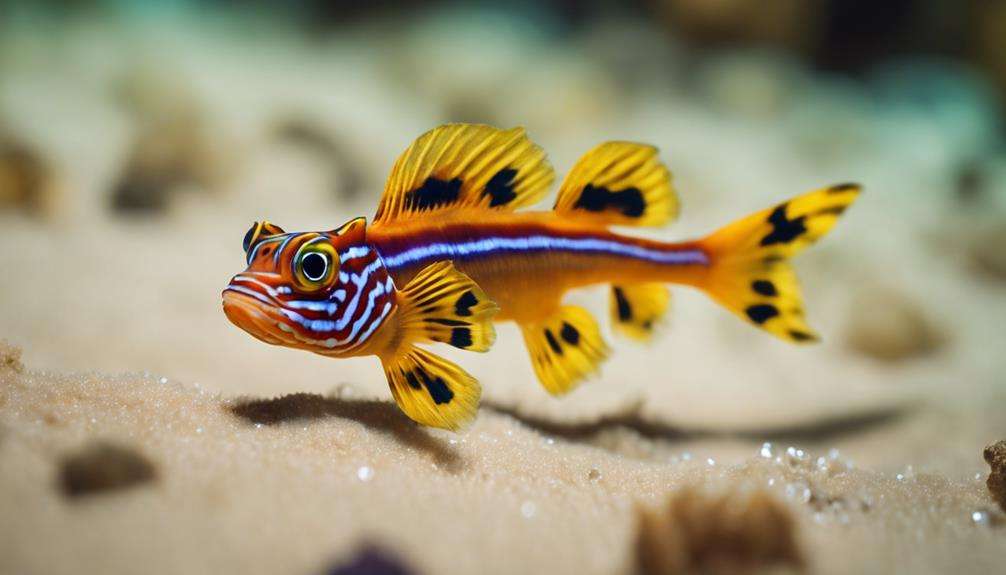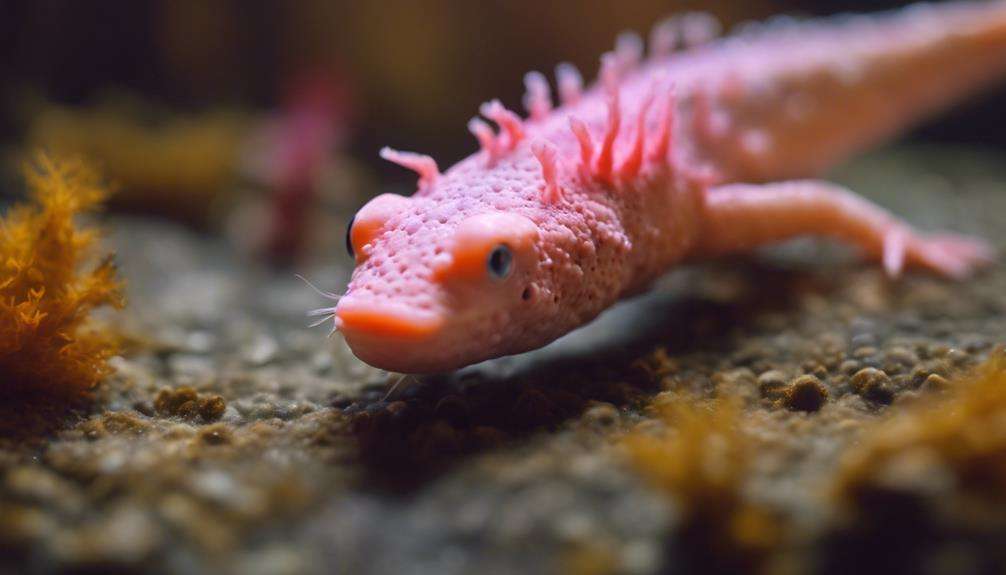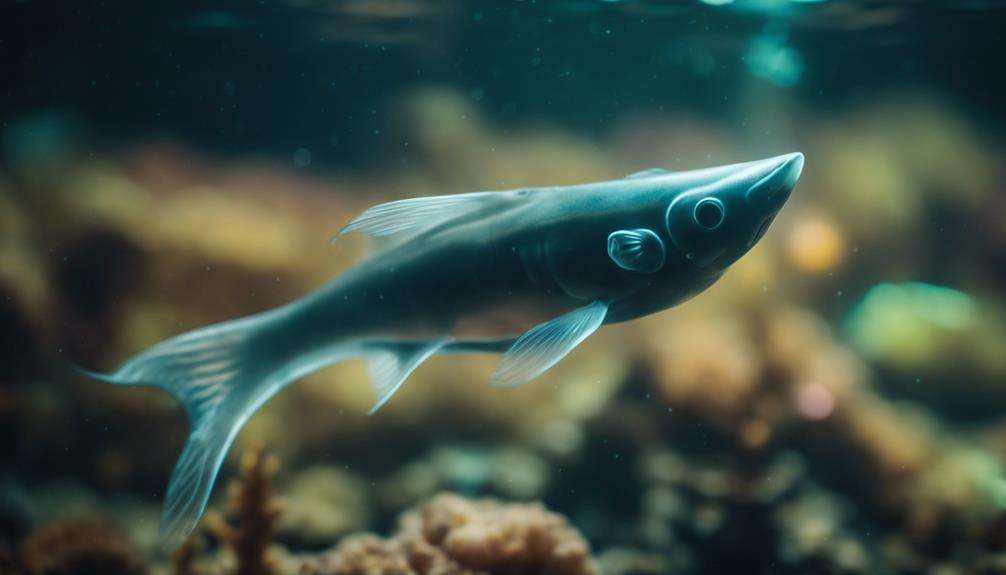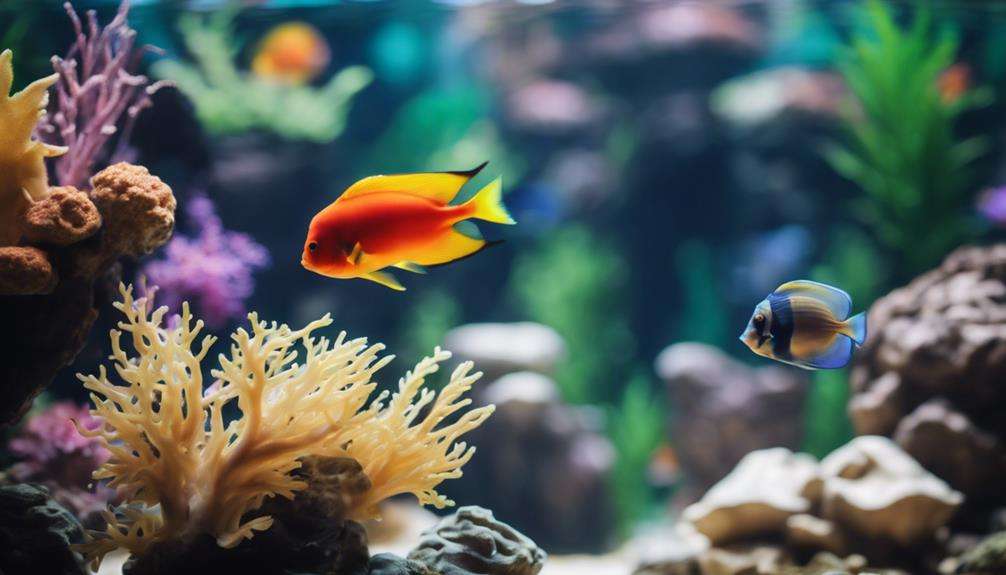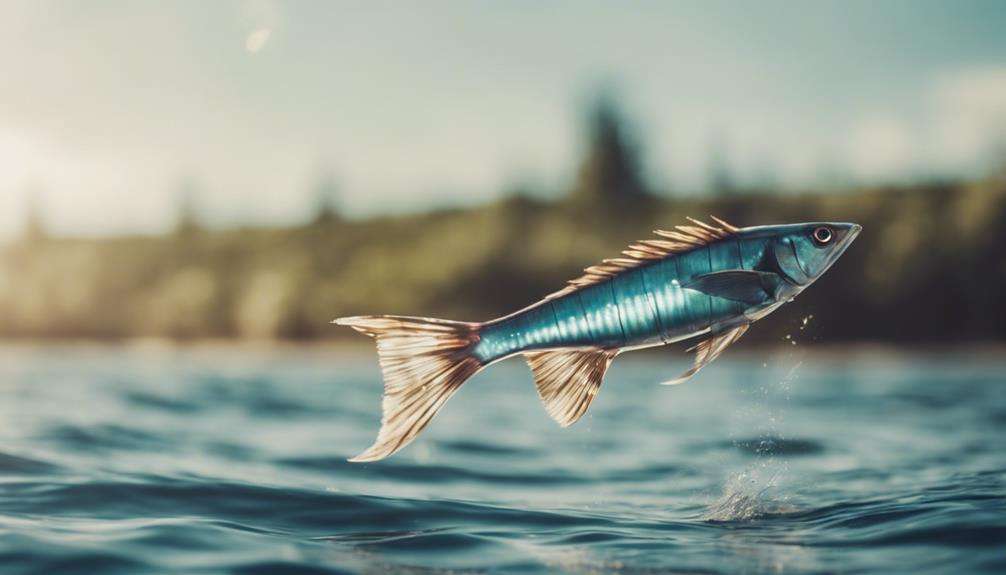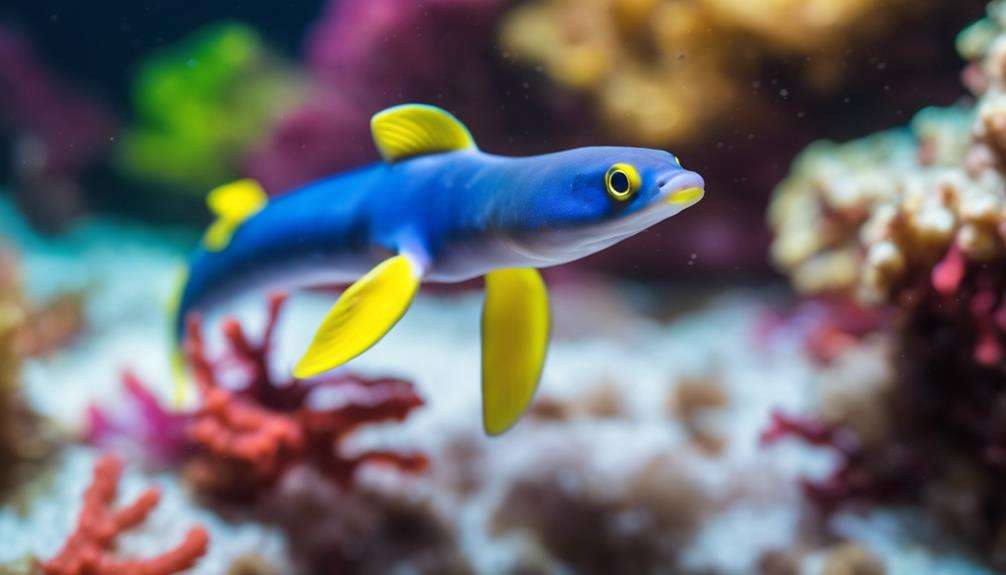When setting up your dwarf lionfish tank, ensuring the right tank size and habitat features is crucial.
Imagine having a beautifully decorated tank with live rock and hiding spots, providing the perfect environment for your dwarf lionfish to thrive.
But there's more to consider beyond just the physical setup. Understanding their unique feeding requirements, tank mates, and behaviors are equally important for a successful tank.
Ready to create a harmonious underwater ecosystem for these mesmerizing creatures?
Key Takeaways
- Choose a 30-gallon tank with overhangs and live rock for dwarf lionfish.
- Maintain water quality with proper temperature, salinity, and pH levels.
- Provide a diverse tank landscape with hiding spots and open areas.
- Feed a diet rich in meaty foods, monitor behavior, and prevent aggression in tank mates.
Tank Size and Specifications
When setting up your Dwarf Lionfish tank, ensure you choose a minimum tank size of 30 gallons to provide adequate space for their well-being and natural behaviors. The tank specifications should include overhangs, live rock, and macro algae to create hiding spots and ambush areas for your Dwarf Lionfish. These features mimic their natural habitat and help reduce stress levels. Consider incorporating a sump refugium and protein skimmer into your tank setup for efficient waste management, which is crucial for maintaining water quality in the long term.
In addition to the tank size and design, providing ample space for swimming and open swimming areas is essential for the overall health of your Dwarf Lionfish. These fish are ambush predators that require both hiding spots and open areas to thrive. By ensuring your tank meets these specifications, you're creating an environment that closely resembles their natural habitat, promoting their well-being and reducing the likelihood of stress-related issues.
Water Parameters for Dwarf Lionfish
To ensure the optimal health and well-being of your Dwarf Lionfish, maintaining specific water parameters within your tank is essential for their thriving existence. Dwarf Lionfish require a water temperature ranging from 73-84°F to mimic their natural habitat. It's crucial to keep the salinity level between 1.020-1.025 for the optimal health of Dwarf Lionfish. Additionally, maintaining a pH range of 8.1-8.4 is vital as Dwarf Lionfish thrive in slightly alkaline conditions.
Regular monitoring of ammonia levels (0 ppm), nitrites (0 ppm), and nitrates (0-20 ppm) is necessary to prevent any harm to your Dwarf Lionfish. Ammonia and nitrites are highly toxic to fish and can be detrimental to their health. Elevated nitrate levels can also stress Dwarf Lionfish and lead to health issues if not kept in check.
Tank Landscape for Dwarf Lionfish
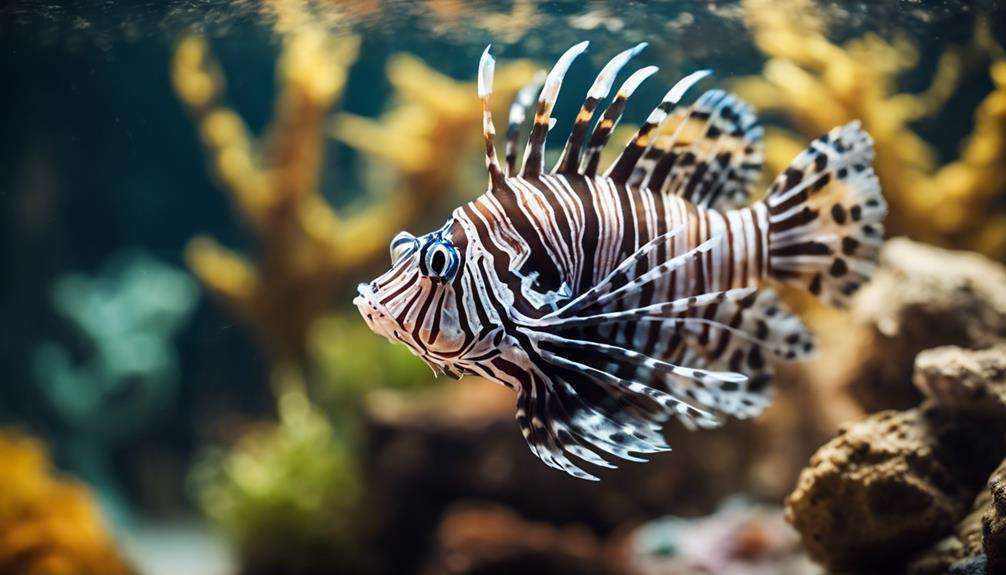
Create a diverse tank landscape with ample hiding spots, live rock formations, and open swimming spaces to cater to the natural habitat needs of your Dwarf Lionfish. Providing hiding spots is crucial for the well-being of your Dwarf Lionfish, as they seek shelter to feel secure. Rocks, caves, and overhangs offer ideal hiding spots for these fish.
To mimic their natural rocky habitat, incorporate live rock formations and macro algae into your tank landscape. These elements not only provide hiding spots but also create a visually appealing environment for your fish.
In addition to hiding spots, ensure there are open swimming spaces for your Dwarf Lionfish to move around freely. This allows them to exhibit natural behaviors and reduces stress. Consider adding compatible plants and corals to enhance the landscape further.
Maintaining a balance between open areas and hiding spots is essential for promoting a healthy environment for your Dwarf Lionfish. By carefully planning your tank landscape, you can create a habitat that meets the needs of these semi-aggressive fish.
Nutrient Requirements for Dwarf Lionfish Tank
Dwarf lionfish in your tank require a diet rich in meaty foods such as shrimp, squid, and fish to meet their essential nutrient requirements. These live and meaty foods provide the necessary proteins, lipids, and vitamins crucial for their health and vitality. Additionally, supplementing their diet with vitamin-enriched foods and occasional live feeder fish can help ensure they receive a well-rounded nutritional intake.
Monitoring water quality parameters is vital to prevent nutrient imbalances in the tank. Regularly testing for levels of ammonia, nitrites, and nitrates is essential. Maintaining proper water quality through regular water changes and efficient filtration systems is key to reducing nutrient buildup in the tank environment. By keeping these parameters stable and avoiding overfeeding, you can help prevent nutrient-related issues and promote the overall well-being of your dwarf lionfish. Remember, a balanced diet and a clean, well-maintained tank are essential for the health of your aquatic pets.
Feeding Requirements for Dwarf Lionfish
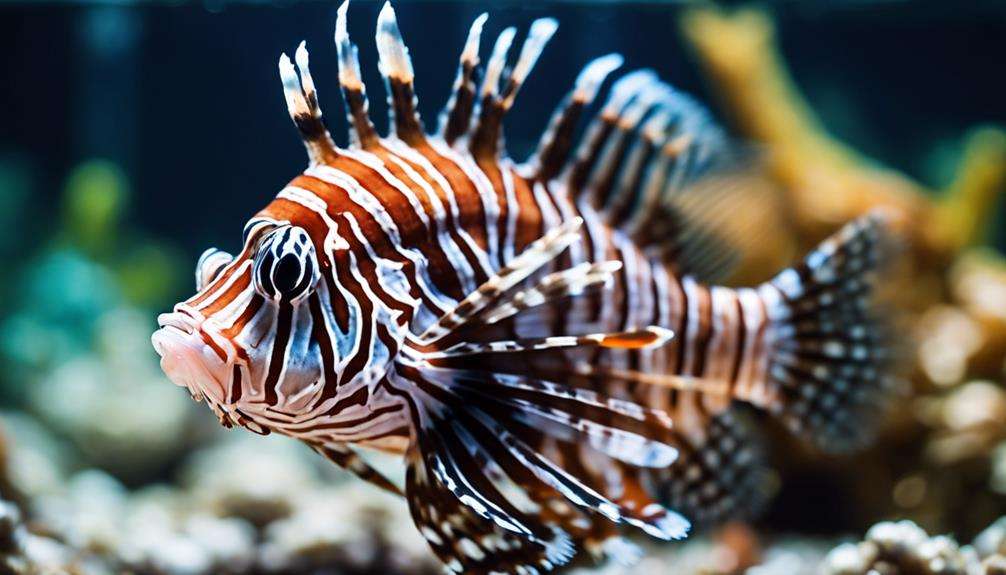
Ensuring proper nutrient intake for your dwarf lionfish is essential for their health and well-being. As carnivorous fish, dwarf lionfish require a diet rich in meaty foods.
Live feeder fish can pose risks of introducing diseases, making it advisable to feed them frozen or fresh seafood. To enhance their diet, soaking their food in vitamins is crucial to provide essential nutrients.
Weaning dwarf lionfish onto frozen foods early on can help establish a varied diet, promoting better overall health. It's vital to monitor their feeding habits closely to ensure each fish receives an adequate amount of food.
Behavior and Tank Mates
When considering the behavior and tank mates for your dwarf lionfish, it's crucial to prioritize their solitary nature to prevent aggression.
Selecting tank mates wisely is essential to avoid stress and potential harm to your dwarf lionfish.
Avoiding aggressive species like puffer fish and triggerfish is key to maintaining a peaceful tank environment.
Tank Mate Compatibility
To promote a harmonious environment in your dwarf lionfish tank, careful consideration of tank mate compatibility is essential. Dwarf lionfish prefer solitary living to reduce stress and aggression. It's advisable to avoid keeping small to medium-sized fish and invertebrates as tank mates with dwarf lionfish.
Tank mates should share similar parameter requirements to ensure compatibility. Aggressive tank mates such as puffer fish and triggerfish should be avoided when housing dwarf lionfish.
Regularly observing tank mates is crucial to ensure they aren't being harassed or eaten by the dwarf lionfish. By selecting appropriate tank mates and monitoring their interactions, you can create a peaceful and thriving environment for your dwarf lionfish.
Aggression Management Strategies
Considering the semi-aggressive nature of dwarf lionfish and their potential predatory behavior towards smaller tank mates, implementing effective aggression management strategies is crucial for maintaining a harmonious tank environment.
Avoid tank mates like pufferfish and triggerfish that may trigger aggression in the dwarf lionfish. Peaceful or medium-sized fish could become stressed when housed with a dwarf lionfish.
Opt for tank mates that can defend themselves against the lionfish's predatory behavior, reducing the risk of conflict. Selecting companions with similar environmental requirements can also help minimize aggressive behavior.
Breeding and Common Diseases
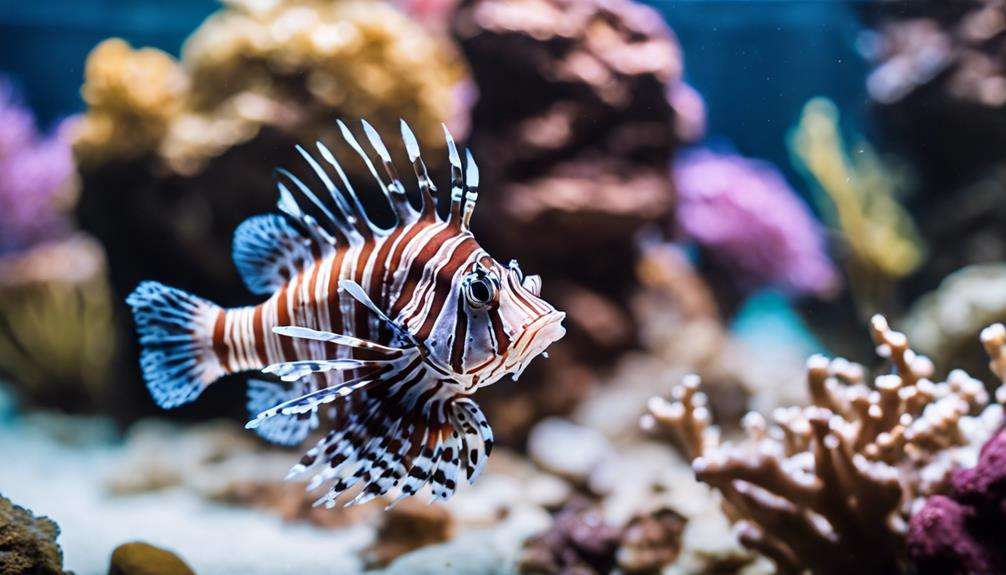
Breeding dwarf lionfish requires careful monitoring of environmental conditions to mimic their natural breeding season.
Look for signs of breeding readiness in female dwarf lionfish, such as pale colors on their bellies and gills.
Beginners should be cautious when rearing dwarf lionfish offspring in captivity due to the complexity involved.
Breeding Tips
When preparing to breed your dwarf lionfish, it's crucial to understand the specific requirements and behaviors associated with spawning. Breeding dwarf lionfish can be challenging, especially for new breeders, due to their specific needs.
As the breeding season approaches, you may notice changes in the spawning behavior of your fish. Female dwarf lionfish can be identified by pale colors on their bellies and gills, indicating their readiness to breed.
Rearing these fish in captivity for breeding purposes can be difficult, even for intermediate breeders. It's essential to create a suitable environment that mimics their natural habitat, provide a well-balanced diet, and closely monitor their behavior to increase the chances of successful breeding.
Disease Prevention
To prevent diseases in dwarf lionfish breeding, maintaining optimal water quality and providing a stress-free environment are crucial measures. Common diseases in dwarf lionfish, such as bacterial infections, parasitic infestations, and protozoan diseases, can be prevented by quarantining new fish and closely monitoring for any signs of illness. Proper nutrition, regular water changes, and a well-established tank ecosystem play vital roles in disease prevention.
Monitoring water parameters like ammonia, nitrites, nitrates, and pH levels is essential for maintaining a healthy environment for your dwarf lionfish. By following these preventive measures and ensuring a stress-free habitat, you can significantly reduce the risk of diseases in your dwarf lionfish breeding setup.
Frequently Asked Questions
How Do You Set up a Lionfish Tank?
To set up a lionfish tank, ensure decorations provide hiding spots. Maintain proper water parameters and choose LED lighting for vibrant colors. Acrylic tanks are recommended for better visibility. Regular water changes are crucial for a healthy tank.
What Size Tank Does a Dwarf Lionfish Need?
For a dwarf lionfish, a 30-gallon tank is essential, providing ample space for swimming and hiding. Proper tank dimensions, suitable environment, and companions are crucial. Remember, a well-equipped 29-gallon tank with appropriate decorations ensures your dwarf lionfish thrives.
Are Dwarf Lionfish Hard to Take Care Of?
Taking care of dwarf lionfish can be challenging due to their specific needs. Maintaining stable water parameters, choosing suitable tank mates, and preventing diseases are essential. Providing a well-structured environment will help ensure their health and well-being.
How Often Should You Feed a Dwarf Lionfish?
When caring for a dwarf lionfish, consider its feeding habits, schedule, and preferences. Feed them 2-3 times a week with small portions of shrimp, squid, and fish. Adjust based on their appetite and use feeding tongs for targeted feeding.
Conclusion
In conclusion, setting up your dwarf lionfish tank properly is crucial for the well-being of these beautiful yet venomous fish. By providing the right tank size, water parameters, habitat landscape, and feeding requirements, you can create a thriving environment for your dwarf lionfish.
Remember, just like a lion prowls its territory, these carnivorous fish need a carefully curated habitat to thrive in captivity. So, ensure you follow these guidelines to create a majestic underwater kingdom for your dwarf lionfish.
